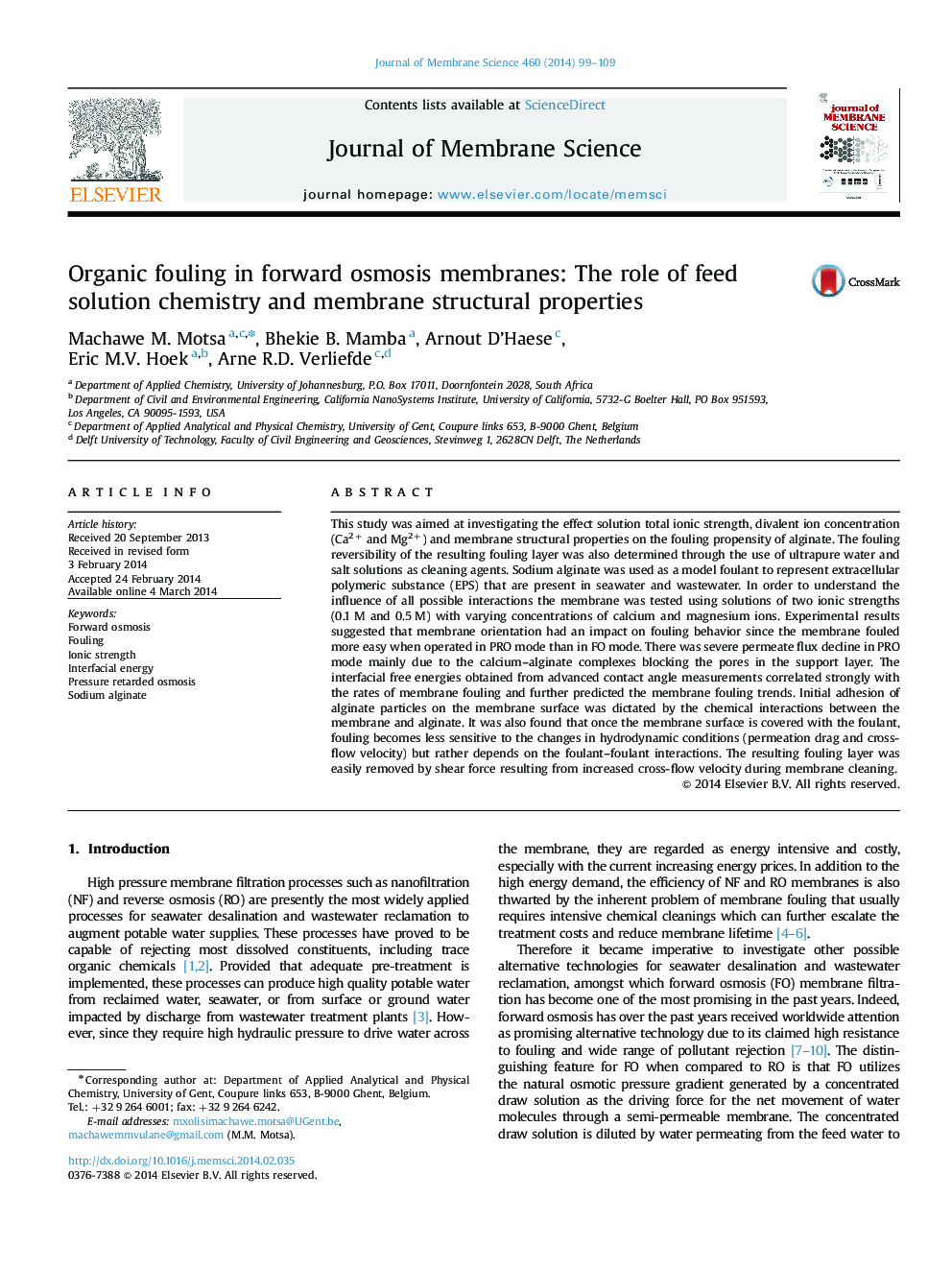| کد مقاله | کد نشریه | سال انتشار | مقاله انگلیسی | نسخه تمام متن |
|---|---|---|---|---|
| 633649 | 1456039 | 2014 | 11 صفحه PDF | دانلود رایگان |
• Sodium alginic salt was used as a model organic foulant.
• Feed solution composed of NaCl, CaCl2, and MgCl2 in varying concentrations.
• Fouling tests were performed in FO and PRO modes.
• Severe permeate flux decline in PRO mode in the presence of calcium ions.
• Non-electrostatic forces govern fouling in the FO process especially in the PRO mode.
This study was aimed at investigating the effect solution total ionic strength, divalent ion concentration (Ca2+ and Mg2+) and membrane structural properties on the fouling propensity of alginate. The fouling reversibility of the resulting fouling layer was also determined through the use of ultrapure water and salt solutions as cleaning agents. Sodium alginate was used as a model foulant to represent extracellular polymeric substance (EPS) that are present in seawater and wastewater. In order to understand the influence of all possible interactions the membrane was tested using solutions of two ionic strengths (0.1 M and 0.5 M) with varying concentrations of calcium and magnesium ions. Experimental results suggested that membrane orientation had an impact on fouling behavior since the membrane fouled more easy when operated in PRO mode than in FO mode. There was severe permeate flux decline in PRO mode mainly due to the calcium–alginate complexes blocking the pores in the support layer. The interfacial free energies obtained from advanced contact angle measurements correlated strongly with the rates of membrane fouling and further predicted the membrane fouling trends. Initial adhesion of alginate particles on the membrane surface was dictated by the chemical interactions between the membrane and alginate. It was also found that once the membrane surface is covered with the foulant, fouling becomes less sensitive to the changes in hydrodynamic conditions (permeation drag and cross-flow velocity) but rather depends on the foulant–foulant interactions. The resulting fouling layer was easily removed by shear force resulting from increased cross-flow velocity during membrane cleaning.
Journal: Journal of Membrane Science - Volume 460, 15 June 2014, Pages 99–109
